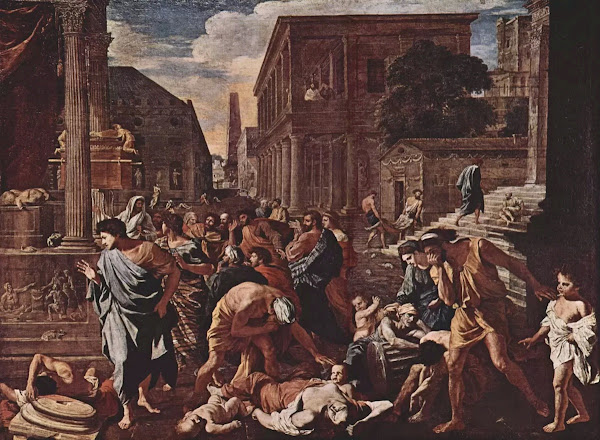 | The Antonine Plague occured from of 165 to 180 AD. It erupted during the reign of the last of the Five Good Emperors, Marcus Aurelius Antoninus (161-180 CE). Lucius Verus, co-emperor with Marcus Aurelius, died from the illness in 169 CE; Marcus Aurelius died 11 years later from the same illness. The ancient pandemic was thought to have been brought to the Roman Empire by troops returning from campaigns, but it also likely travelled along trade routes. The culprit is thought to be an ancestor of the smallpox virus. |
 | At the outbreak of the plague, Rome's military consisted of 28 legions totaling 150,000 men. The rapid decline of the Roman military, along with a severe economic contraction, contributed to the decline and fall of the Empire. The Roman historian Dio Cassius (155-235 CE) estimated 2,000 deaths per day in Rome at the height of the outbreak. In the second outbreak, in 251-266 CE, the estimate was much higher, upwards of 5,000 per day. The death toll of the Antonine Plague is unknowable. Guesses have ranged from 2 percent to 25 percent of the population. |
 | Historians point to the bizzare Roman emperor Commodus as a turning point for the empire's greatness. Commodus was emperor jointly with his father Marcus Aurelius from 176 until his father's death in 180, and solely until 192. In the words of a senator, Commodus himself was a curse worse than any plague. |  |

No comments:
Post a Comment